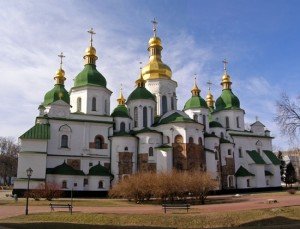As all are aware, September 1st was the beginning the Church year. Already during this month of September we have celebrated two of the 12 major feasts of our Church: the Birth of the Mother of God (September 8th) and the Exaltation or Elevation of the Holy Cross (September 14th). As I thought about this fact, I decided that it might be very important to share information about the 12 Major Feasts that our Church celebrations. All Eastern Orthodox Churches have the same feasts.
I will be using a paper written by Conrad Rudolph and published by the Center for Medieval and Renaissance Studies at UCLA. I found his paper very interesting and, therefore, have decided to share it with my readers, together with my own commentary.
Historians have never properly dealt with the Twelve Great Feasts, which are called the Dodekaortion of the Eastern Church. While some feasts have received much attention, others have been almost totally ignored, thus making an understanding of these feasts as a group difficult. More importantly, Rudolph maintains, scholarship has largely disregarded the historical causes behind the feasts’ existence. Only one scholar, Gregory Dix, who is a scholar of liturgy, tried to approach the subject of the feasts as a whole. It is his belief that the feasts strictly commemorate the historical events in Christ’s life rather than theological doctrine. He began his discussion of the origin and spread of the early Church’s feasts with this comment: “It is one thing to have a knowledge of the course of liturgical history…. It is quite another and a more difficult thing to understand the real motive forces which often underlie such changes.”
It was Rudolph’s hope to explain the real “motive forces” behind the wide-spread acceptance of the feasts adopted after the Second Ecumenical Council at Constantinople in 381. I believe that Rudolph achieved his goal. He dealt with them as a group in order to show that the original purpose of these feasts was not to commemorate events in Christ’s life, as Dix believed, by rather to put forth theological and, ultimately political propositions in an accessible and convincing form.
The twelve major feasts are: Crucifixion, Resurrection, Pentecost, Exaltation of the Holy Cross, Entrance into Jerusalem, Ascension, Theophany, Nativity, Presentation, Dormition, Annunciation and Transfiguration. Some Churches have the Raising of Lazarus instead of the Exaltation. Our Church actually has 7 additional major Holy Days which I will include.

